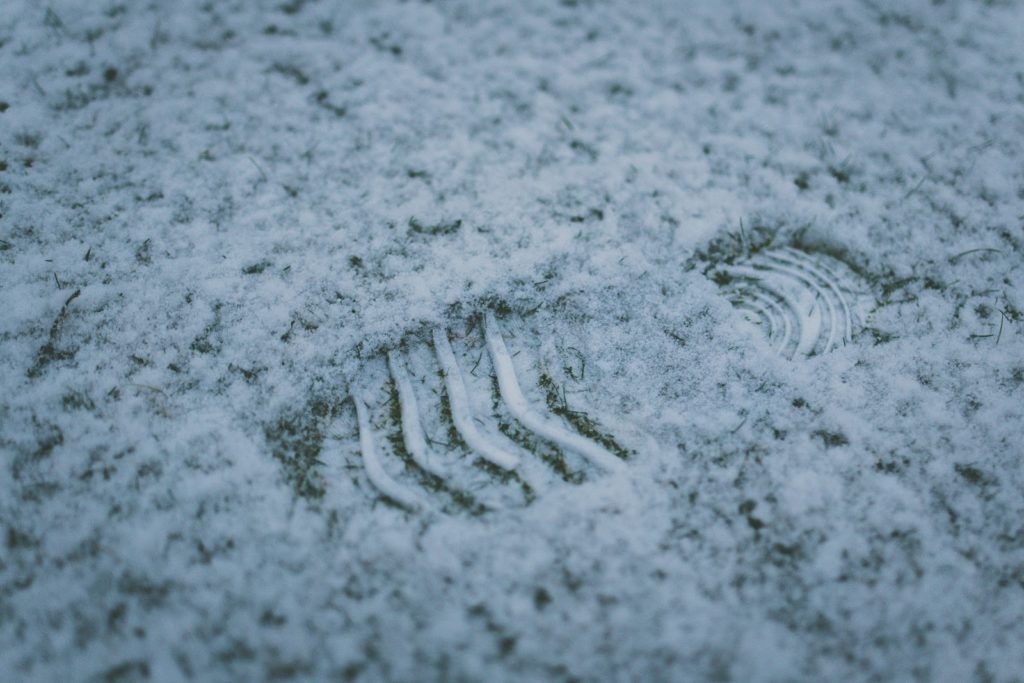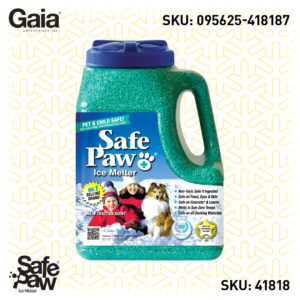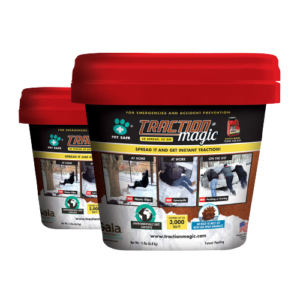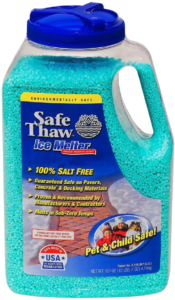Houghton Weather: How Much Snow To Expect This Winter

In Houghton, in December, snow falls for 19.7 days, with typically accumulated 56.1″ (1424.9mm) of snow.
The Farmers’ Almanac has predicted that Great Lakes and Midwest, westward through the Northern and Central Plains and Rockies — is “in for a cold winter, with normal to below-normal temperatures.” Like last year, Houghton is all set to welcome the snow this winter.
People have started preparing a long to-do list for the upcoming winter season. One of the biggest winter woes is to keep the concrete free from the treacherous layer of ice without damaging it. In this article, let’s find out what causes damage to the concrete and how you can save it this winter.
Ice Melt Safe For Dogs

Safe Paw
The Original and the #1 Pet and Child Safe Ice melter for over 20 years. Guaranteed environmentally safe – will not harm waterways and sensitive wetlands.
What Causes Damage To Your Concrete?
• Chemical constituents:
According to the American Concrete Institute (ACI), there are several chemicals, some of which are used in ice melter formulas that actually attack concrete, and are best avoided. They are- Aluminum Chloride, Ammonium Nitrate, Ammonium Sulfate, Ammonium Chloride, Calcium Sulfate, Magnesium Sulfate, Magnesium Chloride, and Sodium Cyanide. Different chemicals react with the concrete differently. For example, Sodium chloride attacks the metal rebar contained within the concrete when it is soaked-up into the concrete.
• Freeze-thaw cycle:
Apart from the chemical-based ice melt, what harms your concrete is the freeze-thaw cycle of water. When you use chloride-based ice melt, it combines with the water and forms a solution called brine. As the temperature increases, this solution seeps into the porous concrete. When the outside temperature decreases, it freezes again, exerting pressure on the concrete and thereby rupturing it.
Weather Forecast
[wpc-weather id=”2345″ /]What Should You Look For In Your Ice Melt?
1- Chemical-free
Since chemicals react with the concrete, they should be completely avoided. Luckily, there are non-toxic, chemical-free solutions available in the market that you can try. For example, an ice melt made with urea or crystalline amide solution is safe for concrete. Such salt-free ice melt is also safe to use around children and pets. Since they are non-corrosive, they don’t cause damage to the concrete driveways and sidewalks.
2- Works at low temperature
Since frequent variations in the temperature cause freeze and thaw cycles, ice melt safely for concrete would be one that can work at low temperatures. If your ice melt can keep the melted ice in a liquid state for a longer duration, then there are chances that the water will drain off or evaporate and not get absorbed in the concrete.
3- Prevents the ice/snow from sticking
Once the ice melter has melted the ice and snow, the fresh snow sticks to the surface of the concrete and other objects. There are very few products that can prevent ice from sticking to surfaces for up to three days of using it. After removing the snow, these ice melt leave a protection layer protection. It also makes shoveling much easier.
4- Other points to consider
Choose the best ice melt that is safe for concrete. Your ice melt should also be non-corrosive, environment-friendly, and 100% safe for your plants, pets, and children. New concrete is more vulnerable. Therefore, make sure your ice melt is safe for new concrete also.
Are you making these mistakes while using ice melt? Check them out.



